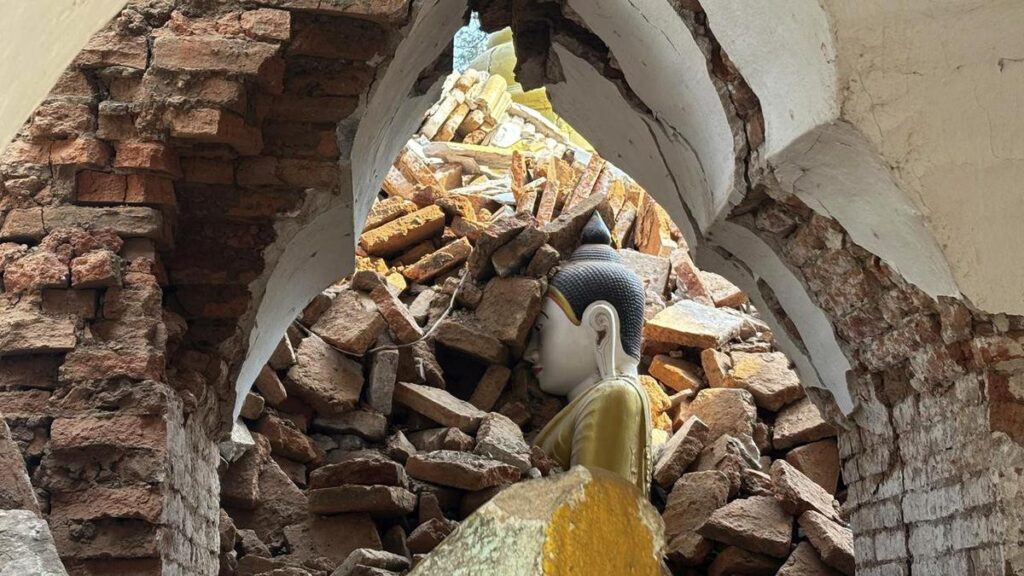Two months after a deadly earthquake ravaged much of central and northeastern Myanmar, recovery is just inching along, with scores of survivors toughing out rainy conditions in leaky tents.
The 7.7 magnitude March 28 quake caused significant damage to six regions and states, including the capital Naypyitaw and Mandalay, the country’s second-largest city.
The confirmed death toll from the disaster has reached 3740, with 5104 injured, according to state media.
As the task of rebuilding grinds along, the grim work of recovering the dead is continuing.
The Myanmar Fire Services Department said on its Facebook page this week that its teams had recovered four bodies from the rubble of the collapsed buildings of the Sky Villa Condominium in Mandalay on Tuesday and Wednesday.
More than 100 bodies have been recovered from the condominium site and search operations will continue as more bodies are believed to be buried under debris, an official of the Myanmar Rescue Federation Mandalay, which works with the firefighters, told The Associated Press on Friday.
Humanitarian needs in Myanmar have reached record levels, with 19.9 million people identified as needing assistance, and an additional two million in urgent need following the quake, according to the UN Office for the Coordination of Humanitarian Affairs.
Myanmar was already plunged into turmoil in 2021, when the army seized power from the elected government of Aung San Suu Kyi, which triggered nationwide nonviolent pro-democracy protests that escalated into armed resistance and what now amounts to a civil war.
“Myanmar continues to face significant humanitarian challenges, driven by recurrent disasters, persistent conflict, and grave protection risks, with an estimated 3.5 million people displaced across the country,” the UN says.
Min Aung Hlaing, the head of Myanmar’s junta government, said at a Thursday fundraising ceremony for disaster relief that more than half a million people from 2081 villages were affected by the quake, state media reported.
Hundreds of roads and bridges were damaged or destroyed and more than 700 hospitals and clinics also suffered varying levels of damage, according to his figures.
Shelter is a major problem, even as people leave temporary camps to return home.
Aung Kyaw, who supervises recovery activities in Hmike Su ward in Mandalay’s Amarapura township, told The Associated Press on Friday that more than 150 people from his ward were still living in roadside shelters in tarpaulin tents
He said they were suffering due to strong winds and constant rain for days, and urgently needed metal roofing.
“I need iron sheets for a roof to build a shelter on my land. I would be satisfied just to be able to safely sleep at my house,” said Aung Kyaw, whose home was destroyed.
He said the people living in temporary shelters will also likely face floods due to heavy monsoon rains in the coming months.
In Naypyitaw, the capital, government personnel have moved to modular low-cost prefabricated buildings built around the compound of the central railway station, while debris is still being cleared from their damaged state housing.
In other damaged residential areas, people have completed clearing the debris on their own, but most of them are still living in tents.
https://thewest.com.au/politics/foreign-aid/myanmar-quake-survivors-still-living-in-leaky-tents-c-18873520


